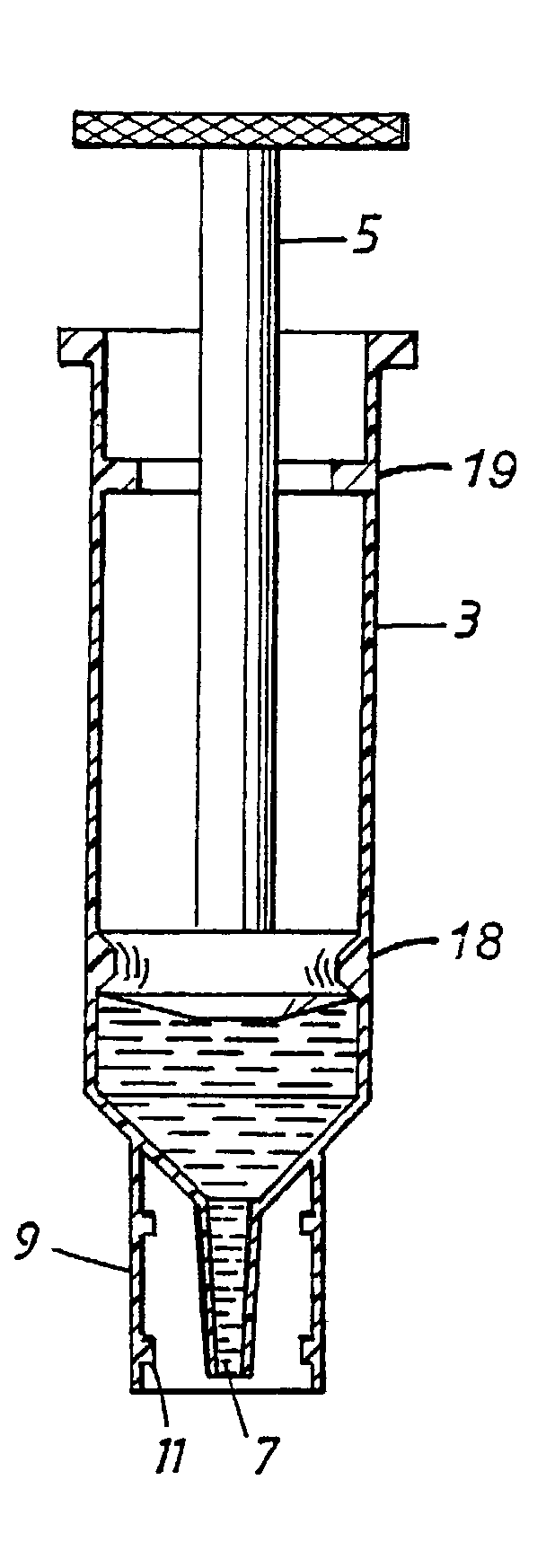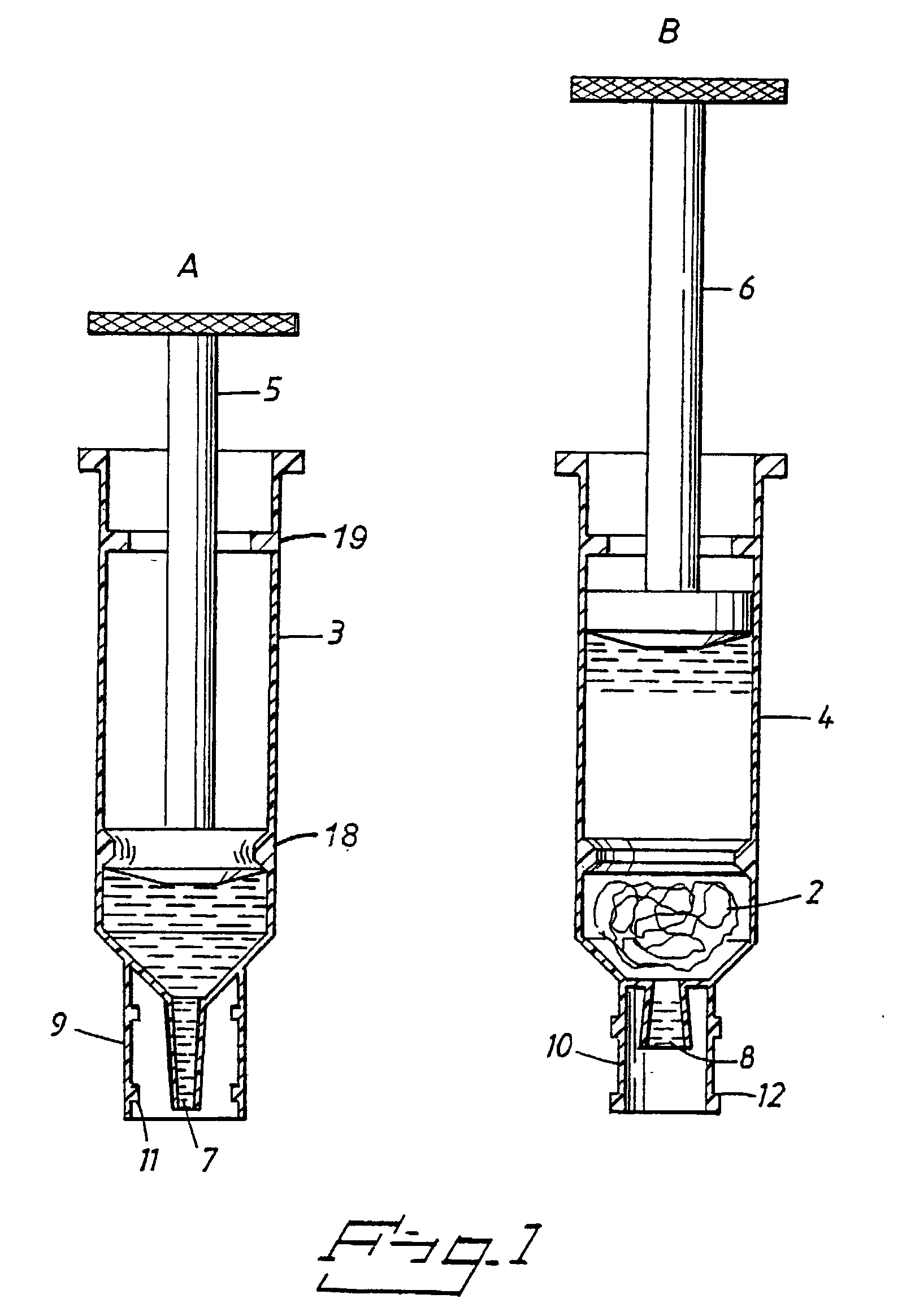Method and device for the handling of samples and reagents
a technology for reagents and handling methods, applied in biochemistry apparatus, biochemistry apparatus and processes, mixers, etc., can solve the problems of not being able to customise the extraction procedure, being suitable for nucleic acids extraction,
- Summary
- Abstract
- Description
- Claims
- Application Information
AI Technical Summary
Benefits of technology
Problems solved by technology
Method used
Image
Examples
Embodiment Construction
[0057] In the present example, a set of interconnectable syringes were used. Different matrixes were tested: silica particles, glass and nylon fibres. A lysis buffer consisting of a salt solution and detergent was used. The rinse buffer consisted of a salt solution and ethanol.
[0058] A sample of non-heparinised human whole blood was drawn into a first syringe, either directly from a patient, using a hypodermic needle, attached to the syringe, or from an intermediate container, a Vacutainer.RTM., containing a patient sample.
[0059] A second syringe was provided, containing silica particles suspended in a lysis buffer. The syringe containing the blood sample was then connected to the second syringe, and the blood sample emptied into the lysis buffer. The mixed content of the two syringes was then pumped back and forth between the two syringes. Each passage through the narrow waist of the interconnected syringes helped to mix the sample with the lysis buffer and ensured thorough mixing ...
PUM
| Property | Measurement | Unit |
|---|---|---|
| volume | aaaaa | aaaaa |
| shape | aaaaa | aaaaa |
| affinity | aaaaa | aaaaa |
Abstract
Description
Claims
Application Information
 Login to View More
Login to View More - R&D
- Intellectual Property
- Life Sciences
- Materials
- Tech Scout
- Unparalleled Data Quality
- Higher Quality Content
- 60% Fewer Hallucinations
Browse by: Latest US Patents, China's latest patents, Technical Efficacy Thesaurus, Application Domain, Technology Topic, Popular Technical Reports.
© 2025 PatSnap. All rights reserved.Legal|Privacy policy|Modern Slavery Act Transparency Statement|Sitemap|About US| Contact US: help@patsnap.com



